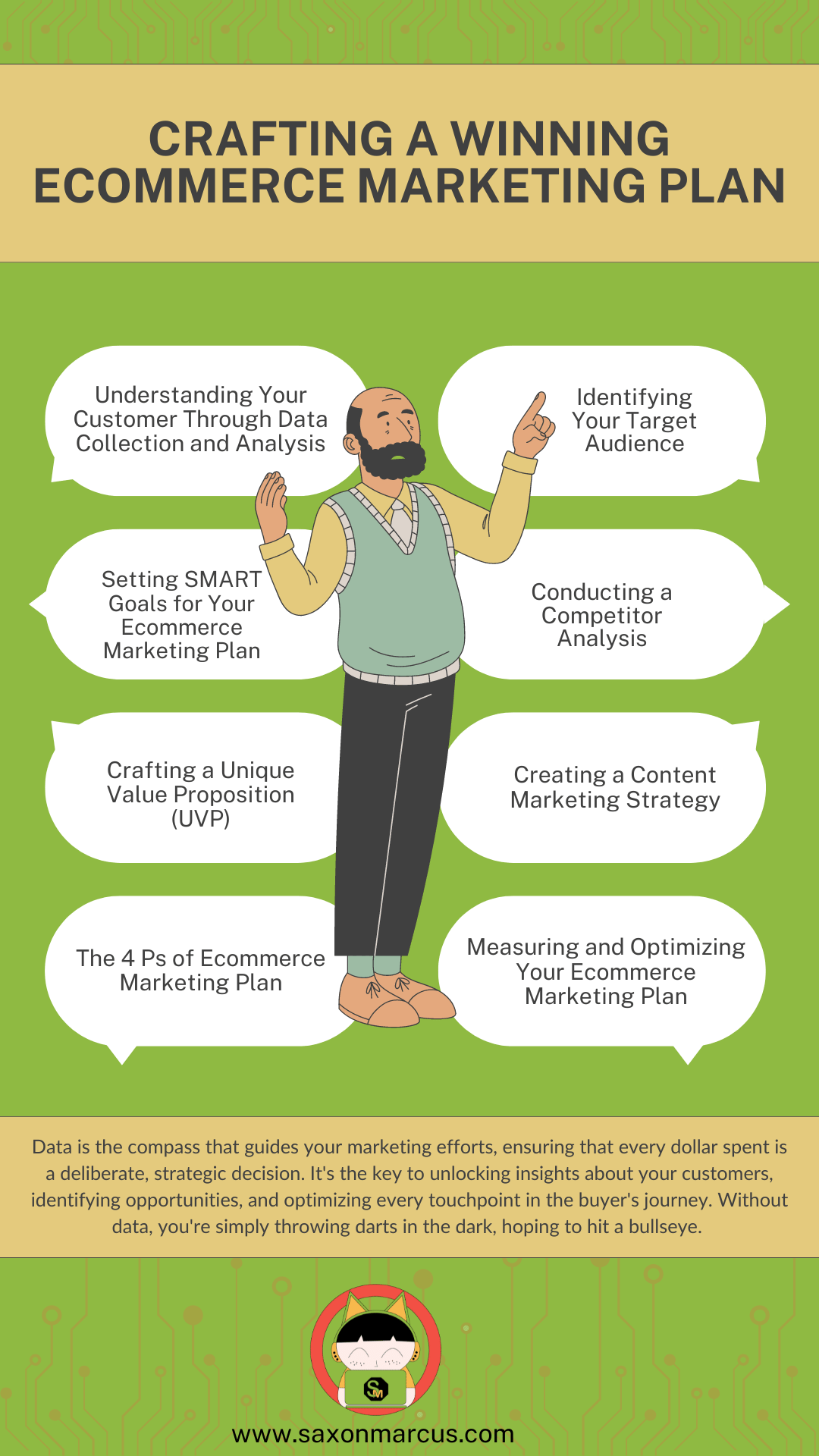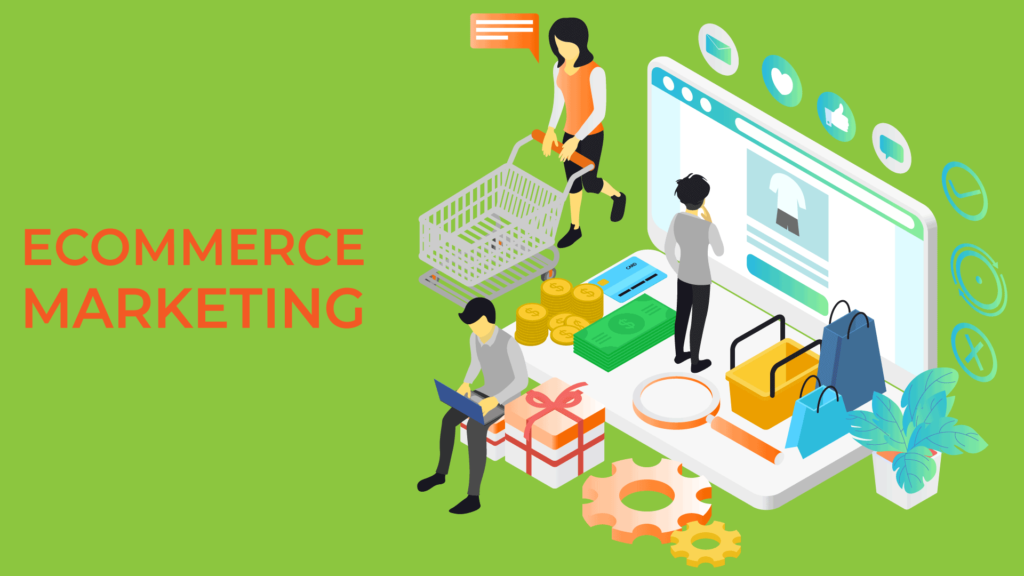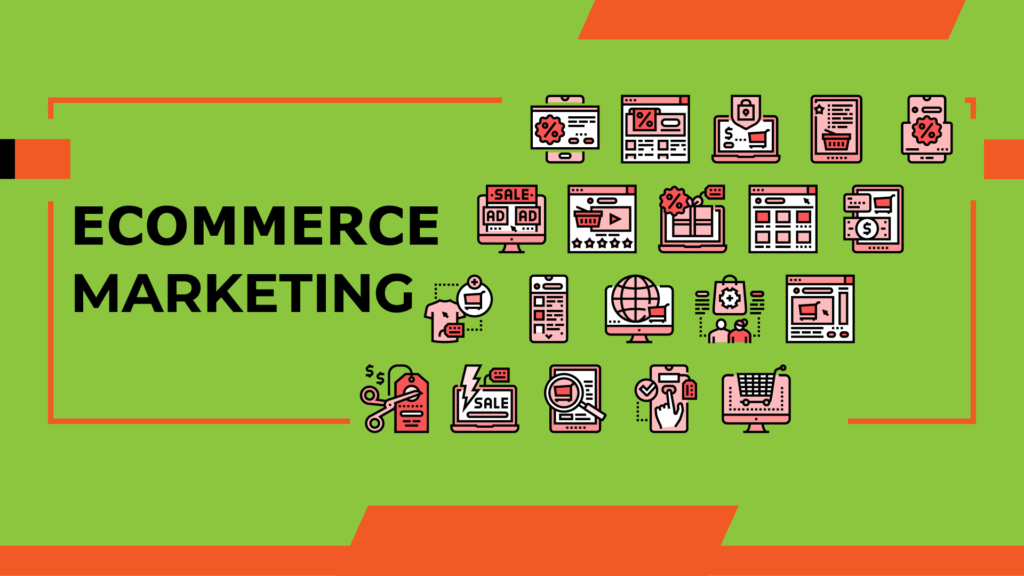
In the cutthroat world of ecommerce, a well-crafted ecommerce marketing plan is the key to unlocking the full potential of your online store. With the vast amount of data available at your fingertips, it’s easier than ever to make informed decisions that drive sales, boost conversions, and leave your competitors in the dust.
But, without a clear strategy, even the most valuable insights can go to waste.That’s why it’s essential to transform your data into a winning ecommerce marketing plan that drives real revenue and growth.
In this comprehensive guide, we’ll take you on a step-by-step journey to help you turn data into dollars, from identifying your target audience and setting measurable goals, to creating a content calendar and optimizing your ad spend.
By the end of this post, you’ll be equipped with the knowledge and tools needed to craft a winning ecommerce marketing plan that drives real results and takes your online store to the next level.
WHY YOU NEED A DATA-DRIVEN ECOMMERCE MARKETING PLAN
In today’s ecommerce landscape, the rules of the game have changed. Gone are the days of relying on intuition and guesswork to drive business decisions. With the plethora of data available at your fingertips, it’s no longer acceptable to fly blind.
Without a data-driven approach, you’re leaving money on the table and ceding ground to your competitors.
A well-crafted ecommerce marketing plan is no longer a nice-to-have, but a must-have for businesses that want to thrive in this digital era.
Data-driven marketing is a strategy built on harnessing data to improve your digital marketing campaigns. This data is collected from consumer interactions and behavior on your site.
Think of it this way: data is the compass that guides your marketing efforts, ensuring that every dollar spent is a deliberate, strategic decision. It’s the key to unlocking insights about your customers, identifying opportunities, and optimizing every touchpoint in the buyer’s journey. Without data, you’re simply throwing darts in the dark, hoping to hit a bullseye.
But with a data-driven approach, you can create a marketing plan that’s laser-focused on driving real results – increased conversions, higher revenue, and a loyal customer base.
In this guide, we’ll show you how to harness the power of data to craft a winning ecommerce marketing plan that drives real growth and profit.
GUIDE TO CRAFTING A WINNING ECOMMERCE MARKETING PLAN
Understanding Your Customer: Data Collection and Analysis
Understanding your customer is the foundation upon which a successful ecommerce marketing plan is built. It’s the key to unlocking the secrets of your target audience, and without it, you’re simply shooting in the dark. To truly understand your customer, you need to collect and analyze data about their behavior, preferences, and pain points.
This means digging deep into your website analytics, customer surveys, and social media insights to uncover the hidden patterns and trends that can inform your marketing strategy.
Imagine being able to pinpoint the exact moment when a customer abandons their cart, or identifying the most common demographics of your loyal customers. With data collection and analysis, you can do just that.
You can uncover the reasons behind cart abandonment, and develop targeted strategies to win back those customers. You can identify the most profitable customer segments, and tailor your marketing efforts to speak directly to them.
By analyzing customer data, you can create buyer personas that are so accurate, they’ll feel like you’re speaking directly to them.
And that’s when the magic happens – when you’re able to craft marketing messages that resonate deeply with your target audience, and drive sales through the roof.
Identifying Your Target Audience: Segmentation and Personas
Identifying your target audience is a crucial step in crafting a winning ecommerce marketing plan. It’s the foundation upon which all other strategies are built, and it’s what sets successful businesses apart from those that struggle to connect with their customers.
Without a deep understanding of your target audience, you’re essentially flying blind, throwing marketing dollars at a vague demographic in the hopes that something sticks.
But with a clear understanding of your ideal customer, you can tailor your marketing efforts to speak directly to their needs, desires, and pain points.
Segmentation is the process of dividing your larger customer base into smaller, more defined groups based on characteristics such as demographics, behavior, and preferences.
This allows you to identify patterns and trends within each group, and tailor your marketing efforts to resonate with each segment.
For example, you may find that your business appeals to both young professionals and stay-at-home parents, but that these groups have different needs and preferences when it comes to your products.
Personas take segmentation a step further, creating detailed, fictional profiles of your ideal customers. These personas should include information such as age, occupation, income level, goals, challenges, and behaviors, as well as their preferences and pain points when it comes to your products.
By creating personas, you can develop a deeper understanding of your target audience and create marketing campaigns that speak directly to them.
For instance, if you’re selling outdoor gear, your persona might be “Alex, the adventurous millennial” who values sustainability and is looking for high-quality gear that can keep up with their active lifestyle. By understanding Alex’s needs and preferences, you can craft marketing campaigns that resonate with them and drive sales.
Setting SMART Goals for Your Ecommerce Marketing Plan
Setting SMART goals is the linchpin of a successful ecommerce marketing plan. Without clear objectives, you’ll be wandering aimlessly in the digital wilderness, throwing resources at trendy tactics without a clear direction or purpose.
SMART goals, on the other hand, provide a beacon of clarity, guiding your marketing efforts towards tangible, measurable outcomes. By setting specific, measurable, achievable, relevant, and time-bound goals, you’ll be able to focus your efforts on the most impactful initiatives, allocate resources effectively, and track progress towards your desired outcomes.
For example, instead of a vague goal like “increase website traffic,” a SMART goal might be “boost organic traffic by 20% within the next 6 months by publishing high-quality, SEO-optimized blog posts twice a week.”
With SMART goals in place, you’ll be able to prioritize your marketing activities, allocate resources wisely, and make data-driven decisions that drive real revenue growth.
Conducting a Competitor Analysis: What You Can Learn from the Competition
In the world of ecommerce, knowledge is power, and knowing thy competition is crucial to staying ahead of the game. Conducting a thorough competitor analysis is a vital step in crafting a winning ecommerce marketing plan.
By scrutinizing your competitors’ strategies, strengths, and weaknesses, you can gain valuable insights that will inform your own marketing decisions and help you outmaneuver the competition.
Imagine being able to peek behind the curtain of your competitors’ operations, uncovering their secrets for success, and identifying areas where they’re falling short.
A competitor analysis allows you to do just that, providing a comprehensive view of the competitive landscape and highlighting opportunities for differentiation and innovation.
By analyzing your competitors’ websites, social media presence, advertising campaigns, and customer engagement strategies, you can uncover answers to critical questions such as: What are their strengths and weaknesses?
What are their customers saying about them? Are they doing new things to attract and retain customers? What are their pricing and promotional strategies? And, perhaps most importantly, what are they doing that you’re not?
Armed with this knowledge, you can refine your own marketing strategy, identify areas for improvement, and create a competitive edge that sets your brand apart from the rest. In the next section, we’ll dive deeper into how to turn these insights into actionable marketing strategies that drive real results.
Crafting a Unique Value Proposition (UVP) for Your Ecommerce Brand
In the vast expanse of the ecommerce landscape, it’s easy for your brand to get lost in the sea of sameness. That’s why crafting a Unique Value Proposition (UVP) is crucial to standing out from the competition and resonating with your target audience.
Your UVP is the secret sauce that sets your brand apart, making it irresistible to customers and giving them a compelling reason to choose you over others. It’s the answer to the question that’s always on their minds: “Why should I buy from you?”
A well-crafted UVP is not just a tagline or a slogan; it’s a clear, concise, and compelling statement that communicates the unique benefits and value that your brand offers. It’s the culmination of your brand’s personality, values, and mission, all distilled into a single, powerful message.
When done right, your UVP will become the North Star that guides all your marketing efforts, helping you to create a consistent and cohesive brand voice that resonates with your target audience.

4 Ps of Ecommerce Marketing Plan
As you embark on crafting a winning ecommerce marketing plan, it’s essential to strike a balance between the four key elements that make up the marketing mix: Product, Price, Place, and Promotion. These 4 Ps, also known as the “Marketing Mix,” are the foundation of a successful ecommerce strategy.
Product
The first P is about understanding what your customers want and need. It’s about creating products that solve their problems, meet their demands, and exceed their expectations. In the ecommerce realm, this means having a deep understanding of your product offerings, including features, benefits, and quality. You must also consider the entire product lifecycle, from development to delivery, and ensure that your products are aligned with your target audience’s preferences.
Price
The second P is about setting the right price for your products. This involves determining the optimal price point that balances profitability with customer demand. You must consider factors such as production costs, competition, market conditions, and perceived value to ensure that your prices are competitive and attractive to your target audience.
Place
The third P refers to the channels and logistics you use to get your products to your customers. This includes your ecommerce platform, payment gateways, shipping strategies, and fulfillment processes. You must ensure that your products are easily accessible, convenient to purchase, and delivered efficiently to create a seamless customer experience.
Promotion
The final P is about getting the word out about your products and creating a buzz around your brand. This involves developing a comprehensive promotional strategy that includes advertising, content marketing, social media, email marketing, and other tactics to reach and engage your target audience. You must create a compelling narrative that resonates with your customers and drives them to take action.
By carefully balancing and integrating these 4 Ps, you’ll be able to create a marketing mix that drives sales, boosts customer loyalty, and sets your ecommerce business up for long-term success.
Creating a Content Marketing Strategy That Drives Sales
Crafting a compelling content marketing strategy is a crucial component of a winning ecommerce marketing plan template. Your goal is to create a content ecosystem that not only resonates with your target audience but also drives sales and revenue growth. To achieve this, you need to move beyond the “spray and pray” approach, where you’re churning out content without a clear purpose or direction.
Instead, focus on creating targeted, high-quality content that speaks to the pain points, interests, and desires of your ideal customer. This could include blog posts, videos, social media content, email newsletters, podcasts, and more. The key is to understand what type of content your audience is craving and then deliver it to them in a way that’s engaging, informative, and entertaining.
For instance, if you’re selling outdoor gear, you might create a series of blog posts that offer tips and tricks for camping, hiking, or rock climbing. You could also produce videos that showcase your products in action, or create social media content that highlights customer testimonials and user-generated content. The idea is to build a relationship with your audience, establish your brand as a thought leader in the industry, and ultimately drive sales and revenue growth.
By taking a strategic approach to content marketing, you can increase brand awareness, drive website traffic, generate leads, and ultimately convert those leads into sales. So, take the time to develop a content marketing strategy that’s tailored to your unique business goals and objectives. With the right approach, you can turn your content into a powerful sales driver that drives real results for your ecommerce business.
Leveraging Email Marketing for Ecommerce Success
When it comes to driving conversions and fostering loyal customer relationships, email marketing is an ecommerce powerhouse that cannot be ignored.
With the ability to target specific segments of your audience, nurture leads, and automate personalized interactions, email marketing can be a game-changer for online retailers. By building a robust email marketing strategy, you can re-engage abandoned cart shoppers, incentivize first-time buyers to become repeat customers, and even reactivate dormant customers who have fallen off the radar.
Moreover, digital marketing email templates offer a level of measurability and ROI that is hard to match with other marketing channels, making it an essential component of a winning ecommerce marketing plan template. By crafting targeted campaigns, leveraging automation, and continually optimizing your approach, you can unlock the full potential of email marketing and drive significant revenue growth for your ecommerce business.
Paid Advertising for Ecommerce: A Guide to Google Ads and Facebook Ads
When it comes to driving traffic and sales to your ecommerce site, paid advertising is a crucial component of a winning marketing plan. Two of the most effective platforms for ecommerce businesses are Google Ads and Facebook Ads. With these platforms, you can reach potential customers at every stage of the buying journey, from awareness to conversion.
Google Ads, formerly Google AdWords, is a powerful platform that allows you to target customers who are actively searching for products like yours. With Google Ads, you can create text-based ads that appear at the top and bottom of search engine results pages (SERPs), driving high-quality traffic to your site. By targeting specific keywords and demographics, you can ensure that your ads are seen by customers who are most likely to convert.
Facebook Ads, on the other hand, offer a unique opportunity to target customers based on their interests, behaviors, and demographics. With over 2.7 billion monthly active users, Facebook provides an unparalleled reach and targeting capabilities that allow you to connect with customers at every stage of the buying journey. From awareness-building campaigns to conversion-driven ads, Facebook Ads offer a range of ad formats and targeting options to help you achieve your ecommerce goals.
By incorporating Google Ads and Facebook Ads into your ecommerce marketing plan template, you can drive traffic, increase conversions, and ultimately, boost revenue. In the next section, we’ll dive deeper into the strategies and tactics for optimizing your paid advertising campaigns for maximum ROI.
Measuring and Optimizing Your Ecommerce Marketing Plan
As you launch your ecommerce marketing plan sample, it’s essential to keep a close eye on its performance. Measuring and optimizing your strategy is crucial to understanding what’s working, what’s not, and where to allocate your resources for maximum ROI.
Think of it as the navigation system for your ecommerce journey, guiding you through the twists and turns of the competitive market landscape.
With the right metrics in place, you’ll be able to track the effectiveness of each marketing channel, from social media to email marketing, and pinpoint areas for improvement.
Are your Facebook ads driving conversions, or are they simply eating into your budget? Are your email campaigns resonating with your audience, or are they ending up in the spam folder? By regularly monitoring your metrics, you’ll be able to answer these questions and make data-driven decisions to optimize your strategy.
But measurement is only half the battle. The real magic happens when you use those insights to refine your approach, tweaking your tactics to better resonate with your target audience.
This might involve adjusting your ad targeting, refining your messaging, or experimenting with new channels altogether. By constantly measuring and optimizing, you’ll be able to stay ahead of the curve, outmaneuver your competitors, and drive continuous growth for your ecommerce business.
Common Ecommerce Marketing Mistakes to Avoid
As you embark on your ecommerce marketing journey, it’s essential to be aware of the common pitfalls that can derail even the best-laid plans. Falling prey to these mistakes can lead to wasted resources, stagnant sales, and a dwindling customer base. To ensure you’re on the path to success, steer clear of these ecommerce marketing agency missteps.
One of the most significant mistakes is failing to understand your target audience. Without a deep understanding of their needs, preferences, and pain points, your marketing efforts will likely fall flat. It’s crucial to conduct thorough customer research to create buyer personas that guide your marketing strategy.
Another mistake is neglecting to track and measure key performance indicators (KPIs). Without a clear understanding of your metrics, you’ll be unable to gauge the effectiveness of your campaigns, identify areas for improvement, and make data-driven decisions.
Additionally, many ecommerce marketers make the mistake of focusing too heavily on acquiring new customers, while neglecting to nurture and retain existing ones. This can lead to a leaky bucket effect, where the cost of acquiring new customers far outweighs the revenue generated from repeat business.
By being aware of these common mistakes and taking proactive steps to avoid them, you can ensure your ecommerce marketing plan sample stays on track and drives real results for your business.

CONCLUSION
As you’ve made it to the final step of our comprehensive guide, you’re now empowered with the knowledge and tools to transform your ecommerce marketing strategy into a revenue-generating machine. By following the step-by-step approach outlined in this guide, you’ve successfully bridged the gap between data and dollars, unlocking the full potential of your online store.
With a clear understanding of your target audience, a well-structured marketing funnel, and a data-driven approach to optimization, you’re poised to drive more traffic, increase conversions, and ultimately, boost sales. By continuously monitoring and refining your marketing strategy, you’ll stay ahead of the competition and capitalize on emerging trends.
Remember, a winning ecommerce marketing plan sample is not a one-time achievement, but a continuous process of improvement. Stay agile, stay informed, and most importantly, stay focused on delivering value to your customers. By doing so, you’ll turn data into dollars, and your ecommerce business will thrive in the ever-evolving digital landscape.
And there you have it – a comprehensive roadmap to transform your best ecommerce marketing efforts from data-driven insights to dollar-generating results. By following the step-by-step guide outlined in this post, you’ll be well on your way to crafting a winning marketing plan that drives real revenue growth for your online store.
Remember, the key to success lies in leveraging data to inform your strategy, staying customer-centric, and continually optimizing your approach. With persistence, patience, and a willingness to adapt, you’ll be turning data into dollars in no time. Now, go forth and conquer the world of ecommerce marketing!



